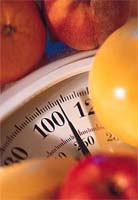
by usadmin | Dec 16, 2011 | Nutrition
Recommended Dietary Allowance (RDA) the amounts of selected nutrients considered adequate to meet the known nutrient needs of healthy people. The RDA are based on scientific knowledge and have been presented by a committee of the Food and Nutrition Board (FNB) of the...
by usadmin | Dec 16, 2011 | Nutrition
Vitamins are normally associated with what the body finds difficult to produce on its own. These substances are important for a number of bodily functions and are required in small dosages. So for our own knowledge we can break vitamins down into ‘vital minimums’. In...
by usadmin | Dec 16, 2011 | Nutrition
Running for over 90-120 minutes at race pace can totally deplete glycogen stores even if well loaded beforehand. This means your muscles will have to resort to fat or protein for energy. As fat requires oxygen to burn, you will have to slow right down (or walk!), so...

by usadmin | Dec 16, 2011 | Nutrition
Most athletes know the importance of carbohydrates. And many see their main source coming from breads, pastas and cereals. However, the table below will show you further examples of foods that do provide carbohydrates. In selecting the food source, the food group is...
by usadmin | Dec 16, 2011 | Nutrition
What are carbohydrates? All carbohydrates are made up from sugars. There are a number of different types of sugars but in the body all carbohydrates metabolism converts sugar to glucose, our body’s preferred energy source. Glucose is the main sugar present in many...
by usadmin | Dec 16, 2011 | Nutrition
To calculate the energy available from a food, multiply the number of grams of carbohydrate, protein, and fat by 4,4, and 9, respectively. Then add the results together. For example, 1 slice of bread with a tablespoon of peanut butter on it contains 16 grams...










